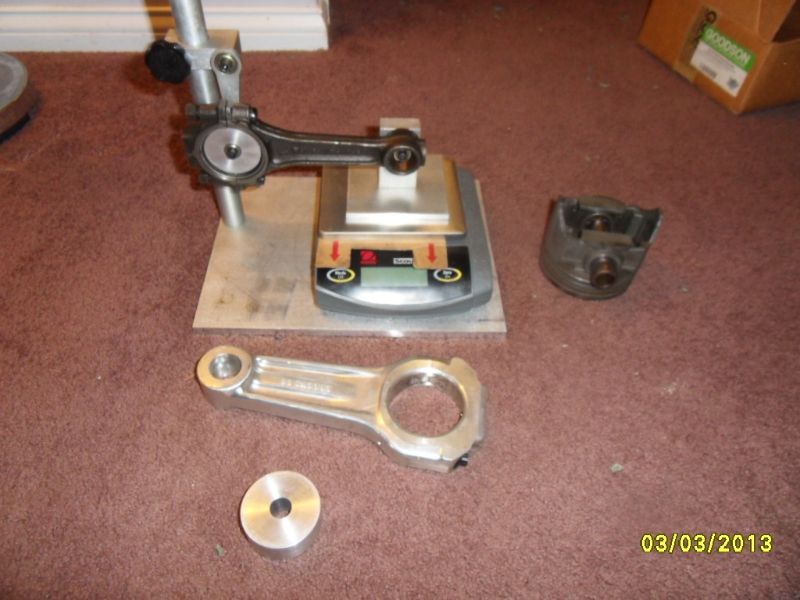Some odds & ends -
0.07 or below is the target IPS since (I've read) humans cannot detect vibration at or below .07 IPS. The accelerometer can. I bought the Dynavibe when it first came out 2007 - one of their first customers. I've done dozens of planes since then. Some interesting things I've learned:
Most mechanical tachs read low at high RPM, especially well worn ones. The optical sensor on the Dynavibe allows one to check the accuracy of the mechanical tach - a side benefit of getting a "prop balance".
If there is significant imbalance 0.25 and higher, balancing the prop can allow the engine to gain as much as a couple hundred more RPM since power is no longer being wasted in overcoming the drag of imbalance.
Although called a "prop balance", balancing the prop is actually detecting overall rotational imbalance. The Dynavibe tells one just where to put weight to offset the imbalance, wherever it is coming from. The original Dynavibe (now called the "Classic") is all one needs. It's still around $1500 new. Their GX model at $4K can accept two sets of sensor cables allowing one set to be placed at the rear of the engine thus allowing one skilled in its use to use it for diagnostic purposes. Unless one is involved in A&P work at a professional level, the additional capability of the GX models is unnecessary. I've got both the Classic and the GX, the latter was a gift. The "Classic" is all one needs in order to maintain a smooth engine. It's inexpensive enough and valuable enough that it ought to be considered an essential hangar tool. No shop will take as much care and time as the aircraft owner will using his/her own equipment. As engines wear, having your own balancer allows the owner to re-do a balance job as often as they want. Plus, any change such as a new prop or prop repair or spinner mod . . . any change at all with anything that rotates . . . will require a new balance job so it's nice to have your own tools to use whenever one wants.
To learn proficiency in using these things, there's no need to burn avgas. The accelerometer and optical senor can be mounted on a pedestal type shop fan with the shroud removed. A piece of tape on one of the blades will introduce imbalance (assuming there was none to start with) and allow one to practice the use of the balancer.
I always forward the excellent guide at the link below to anyone who I'm doing a balance for. It's an easy read and very comprehensive.
https://www.acessystems.com/wp-content/uploads/2015/10/Aces-Guide-Propeller-Balancing.pdf
Dynavibe's own now well-developed website now provides a wealth of info on the subject. I've been told there are some very good YouTube videos on prop balancing . . . haven't gotten around to watching any of them yet.
If there is significant imbalance (that is, you can put two fingers on the glareshield and feel vibration), take the prop off and do a static balance before you do the dynamic balance. This is mandatory if the vibration is really bad. Optional if not. I've never done a static balance on a CS prop so do some research on the subject if you've got a CS prop. It may be just as easy and simple as with a FP prop for all I know.
Before doing anything, chock the wheels and check blade tracking. An out of track prop is not a difficult problem to correct but if the run-ups cannot return consistent IPS readings, this could be the reason.
Make sure you're aware of any resonance issues that may exist with your engine/prop combination - that is, constant RPM's to avoid. These exist more commonly than many owners are aware of.
Very high, max RPM run-ups to identify imbalance can cause erratic readings thanks to "ground resonance". This isn't always the case, but sometimes it's an issue, especially with high HP engines. Do run-ups at your normal cruise settings unless the plane is straining so hard against the brakes and chocks that it's bouncing around. Drop down a hundred RPM or so if this happens. It's not that common but with bigger engines it can be.
Best do your run-ups in no-breeze conditions. Do you imagine the shop you might use for prop balancing gives this any attention? I've done balance jobs on planes that had just been done by some shop and the IPS readings were awful. Nobody will do as good a job as you will yourself.
Mike Stirewalt





